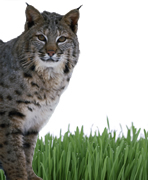Pentraxin 3, Mouse, Monoclonal Antibody 2C3
- Supplier: Hycult Biotech
Product Description
- Monoclonal antibody 2C3 recognizes mouse pentraxin 3 (PTX3). The first line of defense against pathogens is represented by the innate immune system. An important part of this system is the recognition of pathogen associated molecular patterns (PAMPs) by pattern recognition molecules (PRMs). Pentraxins (PTXs) are a family of soluble cyclic pentameric PRMs. Based on primary structure, they can be divided in two groups, short and long PTXs. C-reactive protein (CRP) and serum amyloid P component (SAP) are prototypic short PTXs. Others have been classified as long PTXs. PTXs have a conserved ca 200 amino acid long c-terminal domain containing the PTX signature (HxCxS/TWxS, where x is any amino acid). Human PTX3 encodes a 381 amino acid, 45 kDa secretory glycoprotein with a 162 amino acid N-terminal extension and a 202 amino acid C-terminal pentraxin domain. There is also a high degree of conservation between from mouse to man. PTX3 is the prototypic long PTX and was originally identified in endothelial cells and fibroblasts. Orthologs of PTX3 have been found in a variety of species. The PTX3 gene consists of three exons and two introns. The first two exons code for the leader peptide and the N-terminal domain of the protein, respectively, and the third exon encodes the pentraxin domain. PTX3 expression can among others be induced by proinflammatory cytokines like TNFα, Il1β and TLR agonists. Whereas short PTXs are produced in the liver, the main source of PTX3 expression are myeloid dendritic cells but expression is also seen in monocytes, macrophages, endothelial cells (constitutively expressed), fibroblasts, smooth muscle cells, kidney epithelial cells, synovial cells, chondrocytes, adipocytes, alveolar epithelial cells, granulosa cells and glial cells. _x000D_
- PTX3 expression can be affected by several pathways. PTX3 is also linked to the complement system. It binds to C1q, complement factor H and ficolin-2 and is therefore involved in the classical, alternative as well as the lectin pathway of complement. PTX3 seems to have a important regulating role of complement mediated immune responses. PTX3 acts as an acute phase protein and is a potential marker for infectious, inflammatory and cardiovascular pathologies. PTX3 may play a role in vascular pathology, including atherosclerosis and restenosis, and has been considered as a marker of vascular damage. In humans, PTXs levels are correlated with the risk of developing of vascular events. It is expected that PTX3 have a cardiovascular protective effect. Furthermore, PTX3 upregulation is observed in the endothelium from patients affected by systemic sclerosis, a disease characterized by insufficient angiogenesis. The latter seems to be mediated via fibroblast growth factor 2 (FGF2). The anti-angiogenic affect of PTX3, via FGF2, has also potential to interfere with tumor progression. Like CRP and SAP, PTX3 binds apoptotic cells and debris, and has been associated with the response to tissue damage. This recognition of apoptotic cells is shared by other components of innate immunity (e.g. collectins)._x000D_
- Applications: Flow Cytometry , Functional Studies , Immunoassays , Immunofluorescence , Immunoprecipitation , Western Blot
Resources
Product Options
| Product Number | Description | Package Size | List Price (CAD) | ||
|---|---|---|---|---|---|
| HYBHM113020UG | Pentraxin 3, Mouse, mAb 2C3, 20 µg | 20 µg |
CA$274.40
|
Add to Cart | |
| HYBHM1130100UG | Pentraxin 3, Mouse, mAb 2C3, 100 µg | 100 µg |
CA$669.00
|
Add to Cart |
List Prices are displayed.
Please register or log-in to the site to view your organization’s prices, or please add the products to your cart and click the “Request a Quote” button to receive price and availability information (include quantities for each product and indicate either a one-time purchase or your annual usage.)



